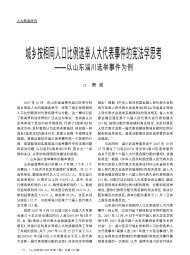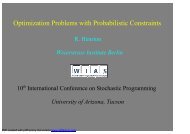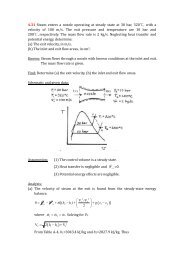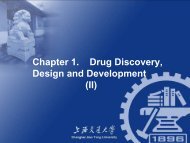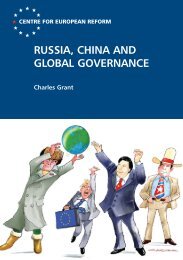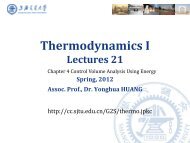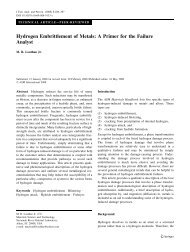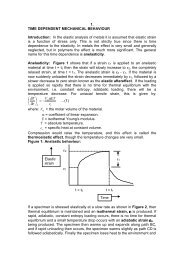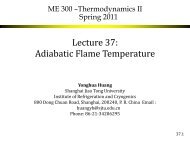The Making of the Apartheid Plan, 1929-1948* - CC
The Making of the Apartheid Plan, 1929-1948* - CC
The Making of the Apartheid Plan, 1929-1948* - CC
Create successful ePaper yourself
Turn your PDF publications into a flip-book with our unique Google optimized e-Paper software.
380 Journal <strong>of</strong> Sou<strong>the</strong>rn African Studies<br />
were idealists. He added: ‘Unfortunately <strong>the</strong>y are half-baked idealists who, except for a few<br />
vague principles, do not propose a major new direction.’ 33<br />
At a 1947 Broederbond conference, basic disagreements about key aspects <strong>of</strong> <strong>the</strong> racial<br />
policy surfaced. Speakers resigned <strong>the</strong>mselves to <strong>the</strong> fact that Africans would remain part<br />
<strong>of</strong> <strong>the</strong> white socio-economic system for a long time. After <strong>the</strong> meeting, Bond secretary Ivan<br />
Lombard called <strong>the</strong> proceedings ‘depressing’, because no solutions had been suggested for<br />
<strong>the</strong> numerous problems that were identified. Ernst Stals, who enjoyed unrestricted access to<br />
<strong>the</strong> Broederbond archives for his unpublished study <strong>of</strong> <strong>the</strong> organisation, notes that <strong>the</strong><br />
Broederbond agreed with, and supported, apar<strong>the</strong>id, but it did not develop and formulate<br />
it. 34 We can now turn to <strong>the</strong> o<strong>the</strong>r, more important, sources from which <strong>the</strong> apar<strong>the</strong>id<br />
ideology drew.<br />
Downloaded by [Shanghai Jiaotong University] at 18:42 19 September 2012<br />
‘<strong>The</strong> Spirit <strong>of</strong> Apar<strong>the</strong>id’: <strong>the</strong> DRC’s Faith<br />
In 1981 a segregated DRC for coloured people was founded. By 1930 <strong>the</strong> DRC had<br />
established a broad record <strong>of</strong> missionary activity in places such as Rhodesia, Kenya and <strong>the</strong><br />
Sudan. However, its missionary efforts among Africans in South Africa itself had lagged<br />
behind. <strong>The</strong> exception was <strong>the</strong> black DRC in <strong>the</strong> Orange Free State. Here, <strong>the</strong> white DRC,<br />
which formed an independent synod in 1864, continued to be influenced by <strong>the</strong> white<br />
DRC in <strong>the</strong> Cape, which had made missionary work one <strong>of</strong> its main activities. By 1910,<br />
<strong>the</strong> DRC in <strong>the</strong> OFS had fourteen missionaries working for it and had established 40<br />
mission congregations with a total <strong>of</strong> 6,839 members. In that year, <strong>the</strong> white church founded<br />
a separate DRC for its black (African) members, using <strong>the</strong> Mission Church for coloured<br />
people as its model.<br />
By <strong>the</strong> 1920s, <strong>the</strong>re was still no prominent figure in <strong>the</strong> DRC in any <strong>of</strong> <strong>the</strong> provinces<br />
who advocated extending <strong>the</strong> practice <strong>of</strong> segregated schools, parishes and churches to<br />
political rights and representation. Indeed, Johannes du Plessis (no relation to J. C. du<br />
Plessis), a towering figure in <strong>the</strong> DRC in <strong>the</strong> field <strong>of</strong> missions, rejected any attempt to use<br />
<strong>the</strong> DRC approach as a justification for political or economic discrimination. In 1921, du<br />
Plessis edited a volume with contributions from ten leading figures in DRC missionary<br />
circles who tried to defend <strong>the</strong> DRC against <strong>the</strong> charge <strong>of</strong> D. D. T. Jabavu, an influential<br />
black academic, that it was ‘an anti-native church’. <strong>The</strong> book admitted that <strong>the</strong> DRC record<br />
with respect to black South Africans was not bright, but pointed out that it was <strong>the</strong> only<br />
large church in <strong>the</strong> country that had to rely exclusively on local funding for missionary<br />
work. While <strong>the</strong> writers regarded segregation as a ‘most excellent <strong>the</strong>ory’, <strong>the</strong>y were, as<br />
Richard Elphick has pointed out, ‘more aware <strong>of</strong> <strong>the</strong> ambiguities, contradictions and pitfalls<br />
<strong>of</strong> segregation than many English-speaking <strong>the</strong>orists’. 35<br />
Within <strong>the</strong> church, a conservative reaction had made itself felt by <strong>the</strong> end <strong>of</strong> <strong>the</strong> 1920s.<br />
A leading representative was J. G. (Valie) Strydom (no relation to <strong>the</strong> later Prime Minister),<br />
who became Secretary for Missions <strong>of</strong> <strong>the</strong> DRC in <strong>the</strong> OFS. He would become one <strong>of</strong> <strong>the</strong><br />
leading exponents <strong>of</strong> what he called ‘apar<strong>the</strong>id as <strong>the</strong> DRC’s missions policy’. At a 1927<br />
meeting organised by <strong>the</strong> DRC Federal Council, and attended by Afrikaans, English and<br />
black church leaders, it was suggested that <strong>the</strong> aspirations <strong>of</strong> <strong>the</strong> small Westernised African<br />
elite be accommodated. Strydom replied as follows: ‘All natives were not as calm and<br />
33 B. M. Schoeman, Die Broederbond en die Afrikaner-politiek (Pretoria, Aktuele Publikasies, 1982), pp. 27–30.<br />
34 Stals, ‘Geskiedenis van die AB’, pp. 203–208.<br />
35 R. Elphick, ‘Missions and Afrikaner Nationalism’ (unpublished paper, 1999). See also his ‘Missiology, Afrikaner<br />
Nationalism, and <strong>the</strong> Road to Apar<strong>the</strong>id’, presented at Currents in World Christianity symposium, ‘Missions,<br />
Nationalism, and <strong>the</strong> End <strong>of</strong> Empire’, Queen’s College, Cambridge, 6–9 September 2000, forthcoming in a volume<br />
edited by B. Stanley (Grand Rapids, Eerdmans).



